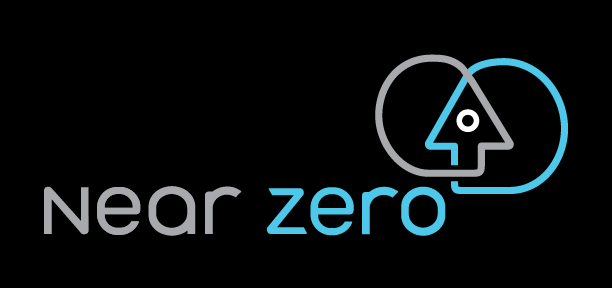California’s cap and trade proceeds will likely exceed Governor’s estimate
California’s Cap and Trade Program is expected to be a significant source of revenue in the coming years. Through December 2018, over $9.4 billion had been collected in the State’s Greenhouse Gas Reduction Fund (GGRF), for investment across three primary program areas: transportation and sustainable communities, clean energy and energy efficiency, and natural resources and waste diversion.
Future proceeds are inherently uncertain, and proceeds in the past have fluctuated widely, since they are tied to the outcomes of the quarterly cap and trade auctions. Governor Gavin Newsom’s first budget proposal, released earlier this month, estimates around $2.6 billion in cap-and-trade proceeds in fiscal year (FY) 2018-19 and $2.1 billion in FY 2019-2020, after $100 million per year is taken out for state revenue backfills (see “Uses of cap and trade proceeds” below).
Using Near Zero’s model of the Cap and Trade Program and assuming each future auction sells out at the floor price, we estimate that total FY 2018-19 GGRF proceeds will be around $3.2 billion and FY 2019-20 proceeds will be around $2.5 billion. These estimates are ~15-20% higher than the estimates in the Governor’s budget proposal, which seem to be conservative estimates and would occur only if some auctions failed to sell out. Looking further ahead, if future auctions continue to sell out, then minimum auction proceeds would remain relatively flat and above $2 billion per year into the mid-2020s.

Auction prices and quantities
Cap and trade proceeds are determined by auction sale prices as well as the quantities sold. To date, prices have generally remained close to the auction floor price specified by regulation, which increases annually by 5% plus the rate of inflation.

But there have been much more dramatic fluctuations in the quantities of allowances sold at auction. In 2016-2017, auction sales collapsed due to uncertainty about the program’s longevity. This auction collapse caused a substantial decline in FY 2016-17 proceeds. Per market rules, most of the allowances that went unsold during that period have now been reintroduced and sold in subsequent auctions, boosting FY 2017-18 and particularly FY 2018-19 proceeds.
Since the passage of AB 398, the 2017 bill that extended the cap and trade program through 2030, all auctions have sold out—so it seems likely the auctions will continue to sell out, at least in the next few years. In the first half of FY 2018-19, both quarterly auctions sold out, yielding over $1.6 billion in GGRF proceeds.
Most of the unsold allowances from 2016-17 will have been reintroduced by the end of FY 2018-19, contributing to a drop in proceeds in FY 2019-20. Also contributing to the drop in FY 2019-20 and the further drop in FY 2020-21 is an increase in the number of allowances that are freely allocated to some industries for 2018-2020, which was recently approved by the California Air Resources Board. This increase in allocations reduces the number of state-owned allowances offered at auction.
If future auctions continue to sell out, then minimum GGRF auction proceeds would remain relatively flat and above $2 billion per year into the mid-2020s. This is due to the combined effects of a rising floor price for allowances and declining annual program budgets that reduce the number of allowances offered for sale. Actual proceeds would be higher than in our projection if auction prices rose above the floor. Conversely, proceeds would be lower than in our projection if some auctions failed to sell out.
Uses of cap and trade proceeds
AB 398 sets aside a small portion of annual GGRF proceeds for backfilling manufacturing/R&D sales tax exemptions and revenue from the state Fire Prevention Fee that was suspended by the bill. The Legislative Analyst’s Office pegs the total backfill at around $100 million per year.
Of the remaining GGRF proceeds, 60 percent are continuously appropriated for specific programs, including high-speed rail, local and regional public transit, and affordable housing and sustainable communities programs. That leaves approximately 40 percent of GGRF proceeds available for discretionary annual budget appropriations.
AB 1550, passed in 2016, requires that a minimum of 25 percent of proceeds be invested in projects that are located within and benefiting individuals living in disadvantaged communities, an additional minimum of 5 percent of funds be invested in projects that benefit low-income households or communities statewide, and an additional minimum of 5 percent be invested in projects that benefit low-income households or communities that are within a half a mile of a disadvantaged community.
Projection details
The projection of cap-and-trade proceeds assumes, as explained earlier, that all auctions sell out at the floor price. The resulting GGRF proceeds are shaped by the interaction of rising floor prices and declining state-owned allowances offered at auction. As annual program budgets decrease, available state-owned allowances also decrease, because the state-owned allowances are what remain after portions of program budgets are devoted to various other uses, including allocations to utilities and industries. Allocations to electricity utilities are scheduled to fluctuate over time through 2030, so available state-owned allowances do not follow a simple linear decline.
The projection also assumes extension of current program rules beyond 2030—an assumption needed to specify what occurs in the advance auctions to be held in 2028-2030 (which will sell allowances of vintages 2031-2033).
This post has been updated to include state revenue backfills of $100 million per year in the cap-and-trade auction proceed estimates from the Governor’s budget proposal.
Blog post
